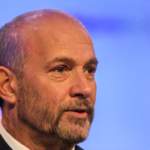Should I Take an Owner's Draw or Salary in an S Corp? - What to Know
When you first launch your own business or small startup, it can be confusing knowing how to do all the fine print properly. You will of course want to make sure that you are following all the rules correctly, especially when it comes to things like tax. But when you’re investing all that money into your new business venture, you will also want to get your fair share of the profits.
So how do you take your own salary or share as a business owner?
Today, we’re going to cover everything that you should be aware of when it comes to taking a salary as a business owner, an owner’s draw, and which of the two you should opt for. It will all come down to what the IRS considers your business to be, your involvement in the business to be, and what your business’ structure is like.
Let’s explore everything that you need to know about a draw and how this compares to a salary!
Also read: How to Review Your Paychecks Before Filing Income Taxes

How Does a Salary Differ From an Owner’s Draw?
So before we get started, we’ll need to understand how an owner’s draw differs from a salary. When it comes to opting for a salary from your business you tend to give yourself a wage depending on your position in the company. This will reach your bank account each time you push the payroll through, and will automatically have certain taxes deducted from your salary.
However, an owner’s draw is very different from a salary.
Also sometimes referred to as a draw, an owner’s draw is where you as the owner of your business takes a certain amount of money from your business, so that you can use it for your own purposes. This could be taken as a single sum, or set up as a regular payment.
Also read: A Full Guide on How to Calculate Income Tax On A Pay Check
Tax Implications
When it comes to the tax implications, this will differ between a draw and a salary. If you were to take a draw, the IRS would count this as self employed rather than an employee. So you would then need to pay additional taxes on these amounts at quarterly intervals throughout the year, because the taxes aren’t automatically taken out of the owner’s draw.
Thinking about taking a salary from your business? This would count as you being an employee. As a result, certain taxes would already be taken from your salary before you even see it in your account.
But how can you know whether you’re classed as self-employed or an employee? It will all come down to the structure of your business and how involved you are in the day-to-day running of your business.
Also read: Mandatory Deductions From Your Paycheck
Eligibility for an Owner’s Salary
You are able to take an owner’s draw from your business if your business is part of:
-
An S corporation (S corp)
-
A C corporation (C corp)
If you are an active employee within your business as part of either an S corp or a C corp, you will be legally required to pay yourself a W-2 salary. So the types of businesses where it will be possible to use a draw include:
-
A partnership
-
A sole proprietorship
-
A Limited Liability Company
In fact, as part of a partnership or a sole proprietorship, you will be legally required to take a draw. The only difference will be if you are part of an LLC. If there are multiple owners of the LLC, it is automatically classed as a partnership, which means you will be able to use a draw. On the other hand, you can also request to have your company taxed as part of an S corporation, so you will be allowed to give a salary to yourself.

Choosing an Owner’s Draw
If You Have a Sole Proprietorship
This is typically when you are the sole owner of your business. This also means that you will be solely responsible for the debts of your business, and that you can also enjoy all of the business profits. As part of a sole proprietorship, you will be required to take a draw.
For the vast majority of businesses of this type, you will be able to move your owner’s draw to a separate owner’s draw account. The other options include taking money from your cash register or your business account and putting this into your personal bank account.
However, the IRS will determine how much tax you have to pay on your business’ profits. So even if you don’t take the full amount of profits, you will still be required to pay the full taxable amount on these profits. So you will have to pay the tax on these profits as they will be the equivalent of a self employed income. But on the other hand, you can also calculate a reduction when it comes to the secondary half of the required Federal Insurance Contributions Act tax (FICA).
Also read: Are Moving Expenses Tax Deductible?
If You Have a Partnership
As part of a partnership, the IRS won’t let you legally pay yourself a salary. Instead, you will have to take an owner’s draw, and then pay the self employed taxable amount on this in regards to your portion of the company’s profits.
If You Have an LLC
The LLC will differ depending on whether you are the sole business owner, or if there are multiple business owners. If you are the only owner of your business, the LLC will be treated as a sole proprietorship. If there are multiple owners, then the LLC will be treated as a partnership.
So as part of an LLC, if you use a draw to take your income, this will be treated as a self employed income and you will be taxed on this at quarterly intervals.
However, as part of an LLC, you can also file the 8832 form which will tell the IRS that your business needs to be taxed as an S corp instead. If you choose this option, and you are are an active member of your business, you will then be considered as an employee. Because of this you will need to take a salary. This will still allow you to take an owner’s draw, but is instead called a shareholder distribution as part of an S corp.
How Does Opting for a Draw Affect Your Owner’s Equity?
Thinking about putting your business up for sale at some point in the future? Then you will need to keep a record of the owner’s equity. This will basically show how much money you are entitled to keep once you have paid off all business debts and sold off your company to another buyer. When part of an LLC, this is typically known as shareholder equity.
You can calculate your owner’s equity or shareholder equity like this:
Assets - any outstanding liabilities = your shareholder equity or owner’s equity
These assets usually include any money that you have invested in your business as well as any profits you’ve made. Any outstanding liabilities of course means any debts of the business, or any money that has been deducted, including a draw.
Also read: Are Home Improvements Tax Deductible?
How to Pay Yourself as Part of an S Corp
As part of an S corp, the IRS will need you to pay yourself a W-2 salary if you are actively involved within the business. You are allowed to take an owner’s draw because of being the business owner, however, these can’t be used to replace a salary.
When you pay yourself a salary as an active employee within the business, this will automatically have certain taxes deducted. This includes Medicare tax, income tax, as well as Social Security. Not an active employee in your business? Then you will instead be counted as a non-employee, so you won’t get a salary.
It will be important to calculate your salary so that you are paying yourself the right amount. If you try to pay yourself less money to avoid paying more tax, this could get you in trouble with the IRS. So you will need to give yourself reasonable compensation, which basically means paying yourself the same wage that you would award a different employee who has been given the same set of responsibilities.

In Summary
So there you have it! You now know the difference between an owner’s draw and a salary, and how this will apply to your individual business. Ultimately, you will take a salary if you are an active employee in your business. You will be able to take an owner’s draw if you are the sole proprietor of your business, or if the business is a partnership.
While you won’t be taxed on an owner’s draw, you will have to pay the full taxable amount of your company’s profits. So even if you don’t take out the full amount of profit as part of your owner’s draw, you will still have to pay the correct amount of tax for these profits at quarterly intervals.
Some businesses will require you to take an owner’s draw instead of a salary. You will only be able to take a salary if you are an active employee within your business, and are essential to the day-to-day running of your company.
Ensuring that employees receive their pay stubs correctly and efficiently can greatly increase their morale. Our online pay stub maker can do exactly that.















